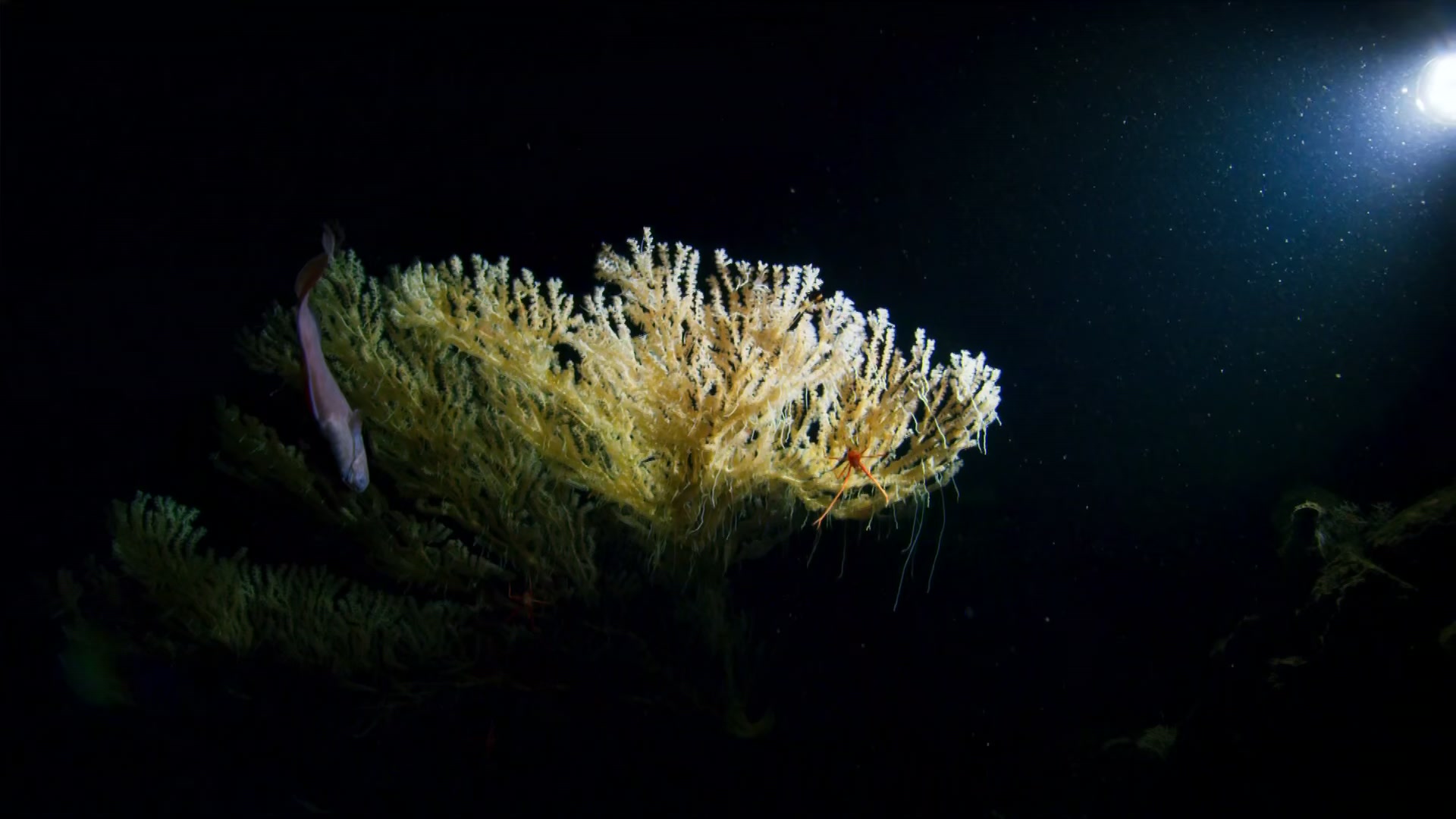

Teachable Moments: The entire nature of the oceanic ecosystem changes as one travels deeper and deeper into the abyss. Key Concepts: Oceanic zones, euphotic zone, disphotic zone, aphotic zone, photosynthesis, chemosynthesis, adaptation, camouflage. Tip for teachers: Use closed captioning! Many of the animals and plants have very unusual names with very unusual spellings! Seeing them in text makes it much easier for the students to follow! I have not written anything for the first episode entitled "The Blue Planet", as it is largely a recap of the other episodes.Įach episode provides a tremendous opportunity for "teachable moments." Whether your focus is biology, earth science, or ecology, there is a good chance your concepts are covered by one more more of these episodes.
#Blue planet the deep series#
The worksheets and student guides I have written for this series are all based on the BBC version starring David Attenborough as the narrator. There are a total of 8 episodes of Blue Planet. Each of the 50-minute episodes covers a different aspect of marine life. The design is accompanied by state-of-the-art AV technology, projections, film, graphics, and illustrations.The Blue Planet is a documentary series released in 2001 by the BBC. In another exhibit, a towering curved ceiling looks like the underbelly of a baleen whale. In the African Great Lakes section, for example, the firm designed with smaller, calmer waves in mind. “We carved out big and small shapes to reflect the huge and really small waves,” Herforth Nielsen said. Throughout the interior, 3XN played with ideas of large and small, creating both grand and intimate settings. “And in Sydney, I got stuck in the shark area with the temperature at 40 degrees celsius.” He wanted to create a better design to minimize crowding and make it easier to regroup if visitors got separated or lost. “I visited a number of aquariums through this process,” said Herforth Nielsen. The foyer is considered “home base,” where visitors walk into different compartments within the whirlpool’s arms and then return. From here, visitors can choose whether to visit river, lake, or ocean habitats. The entryway leads to a circular foyer, which is the crux of the interior design. Water pools surrounding the structure give the appearance that the aquarium is emerging from the water itself.

From ground level, the curves are more subtle, with the whirlpool “arms” fading into the surrounding land. Viewed from above, the building has a rounded center surrounded by silvery arms of the whirlpool the overhead design was important to 3XN, as the aquarium is located close to the Copenhagen Airport. The end result is a stunning structural embodiment of the surrounding landscape. 3XN spent a year in the planning phase, trying to work within the strict budget. “We wanted to tell a story outside of what was inside the building.” The design process was challenging - 3XN abandoned an original proposal to build the aquarium on level with the water, opting for a more expensive foundation was required instead.

“The idea of the whirlpool came from our thought behind the water’s shape,” said Kim Herforth Nielsen, principal of 3XN. For both the exterior and interior, the architects drew inspiration from a certain natural phenomenon.


 0 kommentar(er)
0 kommentar(er)
